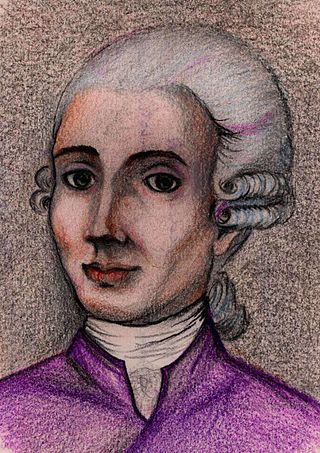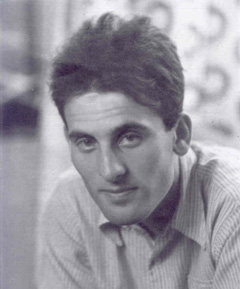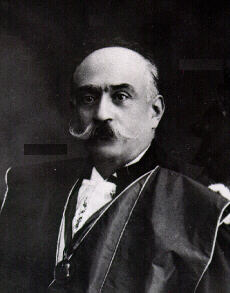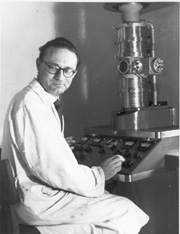
Johan Jacob Ferguson was a 17th-century Dutch mathematician who corresponded with Gottfried Wilhelm Leibniz. [1]

Johan Jacob Ferguson was a 17th-century Dutch mathematician who corresponded with Gottfried Wilhelm Leibniz. [1]
He was born around 1630, probably in The Hague, and died before 24 November 1706, probably on 6 October 1691 in Amsterdam. [1]
In his 1667 book Labyrinthus algebrae, written in low Dutch, [2] he shows the solutions of cubic and biquadratic equations using new methods. [3] The book had a partial translation in Latin (lost) and was sent to Isaac Newton. [4] [5]

Giovanni Bononcini was an Italian Baroque composer, cellist, singer and teacher, one of a family of string players and composers. He was a rival to George Frederic Handel.

Gaspare Tagliacozzi was an Italian surgeon, pioneer of plastic and reconstructive surgery.

Cornelis de Witt was a Dutch States Navy officer and statesman. During the First Stadtholderless Period, De Witt was an influential member of the Dutch States Party, and was in opposition to the House of Orange. In the Rampjaar of 1672 he was lynched together with his brother Johan de Witt by a crowd incited by Orangist partisans.

Giovanni Francesco Giuseppe Malfatti, also known as Gian Francesco or Gianfrancesco was an Italian mathematician. He was born in Ala, Trentino, Holy Roman Empire and died in Ferrara.

Giuseppe Paolo Stanislao "Beppo" Occhialini ForMemRS was an Italian physicist who contributed to the discovery of the pion or pi-meson decay in 1947 with César Lattes and Cecil Frank Powell, the latter winning the Nobel Prize in Physics for this work. At the time of this discovery, they were all working at the H. H. Wills Laboratory of the University of Bristol.

Francesco Maria Sforza Pallavicino or Pallavicini, was an Italian cardinal, philosopher, theologian, literary theorist, and church historian.

Ennio Candotti was a Brazilian physicist and scientific leader.

Augusto Righi was an Italian physicist and a pioneer in the study of electromagnetism. He was born and died in Bologna.

Mario Ageno is considered one of Italy's most important biophysicists.

Giordano Vitale or Vitale Giordano was an Italian mathematician. He is best known for his theorem on Saccheri quadrilaterals. He may also be referred to as Vitale Giordani, Vitale Giordano da Bitonto, and simply Giordano.
The Italian Physical Society is a non-profit organization whose aim is to promote, encourage, protect the study and the progress of physics in Italy and in the world. It was founded in 1897.
Justine Constance Wirix-van Mansvelt was a Dutch Protestant expert on the oeuvre of the Italian poet and writer Dante Alighieri (1265–1321).
The following is a timeline of the history of the city of Turin, Piedmont, Italy.
Dario Graffi was an influential Italian mathematical physicist, known for his researches on the electromagnetic field, particularly for a mathematical explanation of the Luxemburg effect, for proving an important uniqueness theorem for the solutions of a class of fluid dynamics equations including the Navier-Stokes equation, for his researches in continuum mechanics and for his contribution to oscillation theory.
The following is a timeline of the history of the city of Livorno in the Tuscany region of Italy.

Antonio Garbasso was an Italian physicist and National Fascist Party politician. He was the 14th mayor and the 1st podestà of Florence, Kingdom of Italy.

Ferdinando di Diano da Diano, also known as Donatus Polienus, was an Italian mathematician, abbot, philosopher, and theologist.

Cavaliere dottoreCarlo Fornasini was an Italian micropalaeontologist who specialised in Foraminifera ('forams'). He was a pioneer in using fossil forams to sequence marine sedimentary deposits by their relative dates; a technique called biostratigraphy.

Eugenio Tanzi was one of the most influential Italian psychiatrists in the late 19th and early 20th centuries.